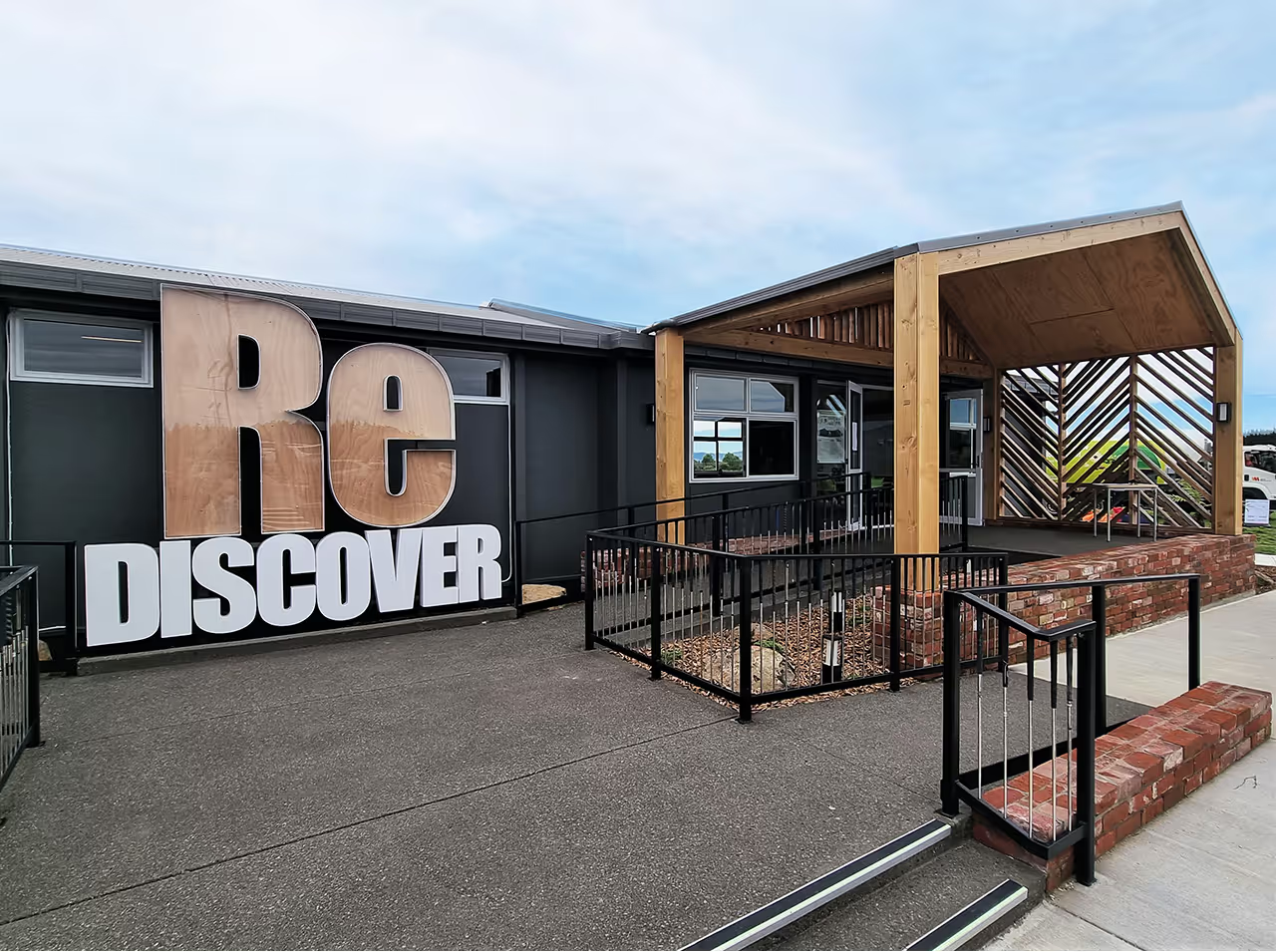
3
·
·
·
August 18, 2023
It’s no secret that construction is an inextricable contributor to our global carbon footprint. As architects, our role in this is pivotal, with innovation enhancing our design-thinking and offering critical progress towards prosperity in the long-term.

Our view is that a cookie-cutter approach isn’t the solution, with each project calling for a bespoke, balanced solution. Michael Bilsborough, Ignite Principal, unpacks some recent examples of how Ignite is embracing construction innovation in our design responses, to improve sustainability outcomes.
At Ignite, we’re enthusiastic adopters of two specific aspects of design and build; innovative materials and off-site construction methodology - supported by and made possible through specialist BIM capability. These methods offer an abundance of benefits for developers, project teams, our communities, and above all, our planet. environment around us.
Embracing modern materials.
The Pines Resource Recovery Park in Burnham, Christchurch offers a fully immersive waste minimisation experience where the public can recycle, learn about sustainability, and repurchase upcycled products. Along with the recovery park’s key function being dedicated to a reduction in carbon emissions, its embodied carbon as a construction project has also been deeply considered.
The recovery park’s structure will be constructed using mass timber products, which have impressively low embodied carbon, and can actually sequester carbon dioxide, even after being felled. Locally sourced Glulam will be used for the main portal frames, and the LVL timber, used for purlins, girts, structural posts and beams, will be FSC certified as 100% renewable, recycled or a mix of both.



Services and systems complement the low-carbon structure, such as recycled fabric ductwork which offers a more efficient solution for heating and cooling large spaces. It requires no seismic restraint bracing and can be returned to the manufacturer for recycling at the end of its life. Solar panels will be placed front and centre of the building, a distinctive addition to the architectural form, as well as providing function - orientated to optimise energy generation.
For the recovery park’s interiors and furnishings, upcycled materials such as pallets, ceramic tiles, bricks, oil drums, repurposed timber and even second-hand furniture is to be used generously, again reducing a reliance on newly manufactured raw materials.
Where possible, materials are to be procured from local sources, reducing transport emissions and lengthy supply chains, often a hidden cost to a project’s carbon emissions production.
In the spirit of the project’s intention, any construction waste produced is to be sorted, weighed and either resold at the Recovery Park or sent to local recyclers. This eliminates the entire concept of waste, keeping products in perpetual cycles of use and re-use.
Striking the Balance
It’s rare for transformation to come without hurdles. Whilst the use of modern construction innovation offers sound advantages, there are some challenges to navigate.
A key consideration is the perceived higher cost of modern materials. Mass timber products such as CLT or Glulam are often viewed as more expensive than steel or concrete. With fewer manufacturing plants, there is no economy of scale until the market matures in NZ. With possible further distance to travel from a production facility to site, this may also add additional expense and add to the build’s embodied carbon production total.
The same challenge can be argued for off-site construction methods, with limited production capacity in NZ, and practical experience within the design and build industry still under development.
Ultimately, we need to push through these challenges, in order for NZ to hone its position in a rapidly growing space – and the key to this is the acceptance that a blanket approach won’t work. It’s a balancing matrix of time, cost, and quality that informs the decision-making surrounding materials and methodology, and it should be a holistic process to identify the best options for the client and end-users.
If we can break through the status quo in a considered flexible way, then we can continue to unlock innovation, augment NZ production and supply viability, and shape the future of sustainable design.
At Ignite we feel privileged to be working with a number of clients who are embracing construction innovation, enabling design for the future with solutions available today.
Visit our projects page, to see more on how we’re shaping sustainable design through construction innovation.
Michael Bilsborough is a Principal at Ignite and believes in creating environments where people can truly thrive, through architectural innovation and smart thinking. His careers spans over 30 years, delivering high profile projects in New Zealand and the UK. Learn more about Michael and his design ethos here.
Our view is that a cookie-cutter approach isn’t the solution, with each project calling for a bespoke, balanced solution. Michael Bilsborough, Ignite Principal, unpacks some recent examples of how Ignite is embracing construction innovation in our design responses, to improve sustainability outcomes.
At Ignite, we’re enthusiastic adopters of two specific aspects of design and build; innovative materials and off-site construction methodology - supported by and made possible through specialist BIM capability. These methods offer an abundance of benefits for developers, project teams, our communities, and above all, our planet. environment around us.
Embracing modern materials.
The Pines Resource Recovery Park in Burnham, Christchurch offers a fully immersive waste minimisation experience where the public can recycle, learn about sustainability, and repurchase upcycled products. Along with the recovery park’s key function being dedicated to a reduction in carbon emissions, its embodied carbon as a construction project has also been deeply considered.
The recovery park’s structure will be constructed using mass timber products, which have impressively low embodied carbon, and can actually sequester carbon dioxide, even after being felled. Locally sourced Glulam will be used for the main portal frames, and the LVL timber, used for purlins, girts, structural posts and beams, will be FSC certified as 100% renewable, recycled or a mix of both.